



The Irish Traditional Music Archive (ITMA) is committed to providing free, universal access to the rich cultural tradition of Irish music, song and dance. If you’re able, we’d love for you to consider a donation. Any level of support will help us preserve and grow this tradition for future generations.
Sliabh Luachra fiddle master Pádraig O’Keeffe and his students had a rich repertoire of hornpipes and hornpipe-like tunes. While some of these tunes were strongly associated with the dances, others were played for listening only. The Breathnach materials once again show Denis Murphy to be a key bearer of the local tradition and reveal his sources for popular local tunes, some of which have bits of folklore attached to them.
A particularly interesting find is a note in CICD 6152 related to The Frisco hornpipe and O’Keeffe’s formative years. Denis Murphy told Breathnach in November 1970 that O’Keeffe “got this in his college days at a football match” where he saw an old man dancing to this tune.
This detail adds a bit of history to the otherwise mysterious tune that may or may not have originally been a hornpipe. Its title hints at the possibility of an American origin but no similar tune has so far been found in music collections from across the Atlantic. It can only be said with confidence that Denis Murphy and other Sliabh Luachra musicians would play The Frisco for the Hornpipe figure of the set.
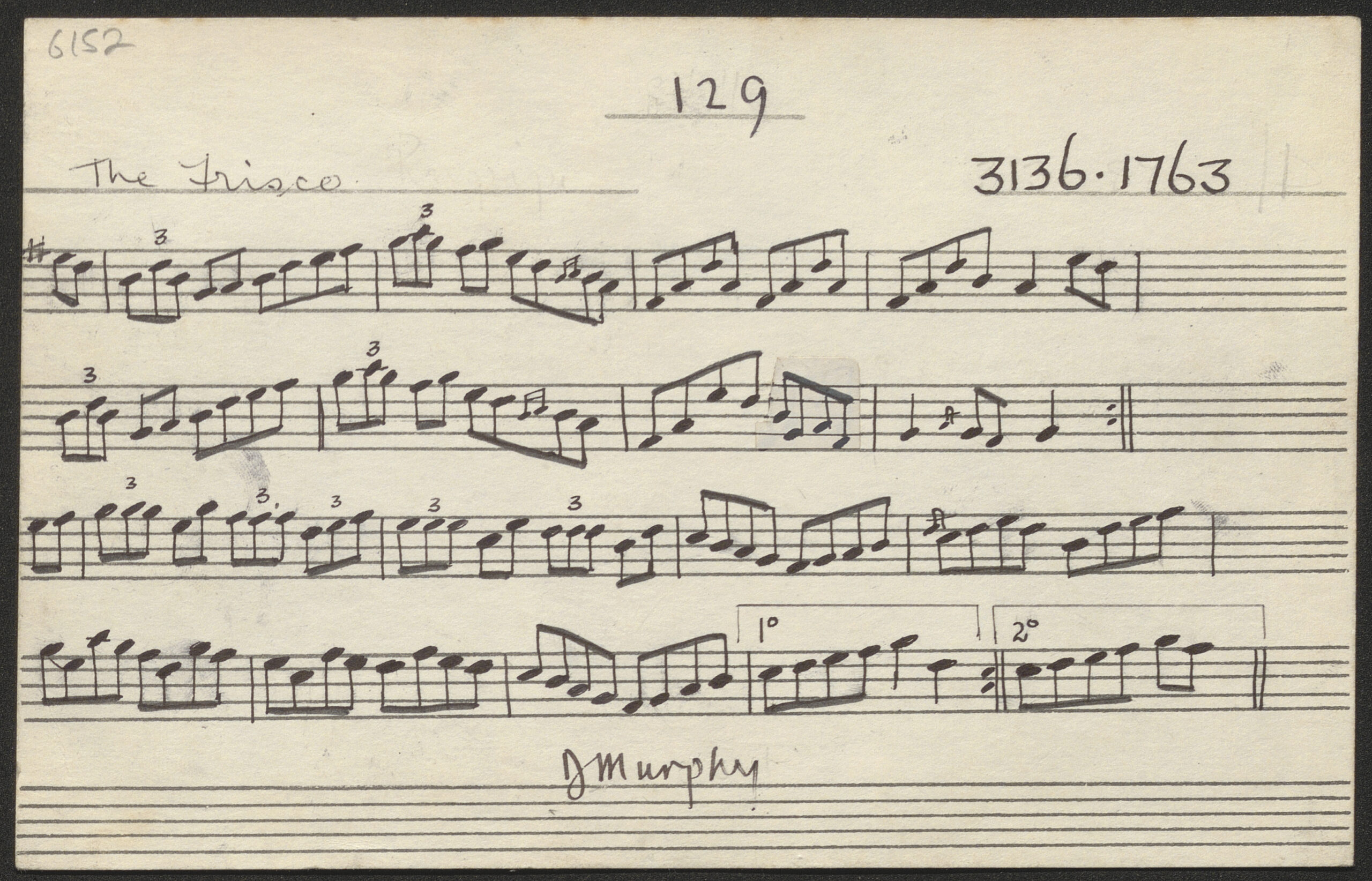
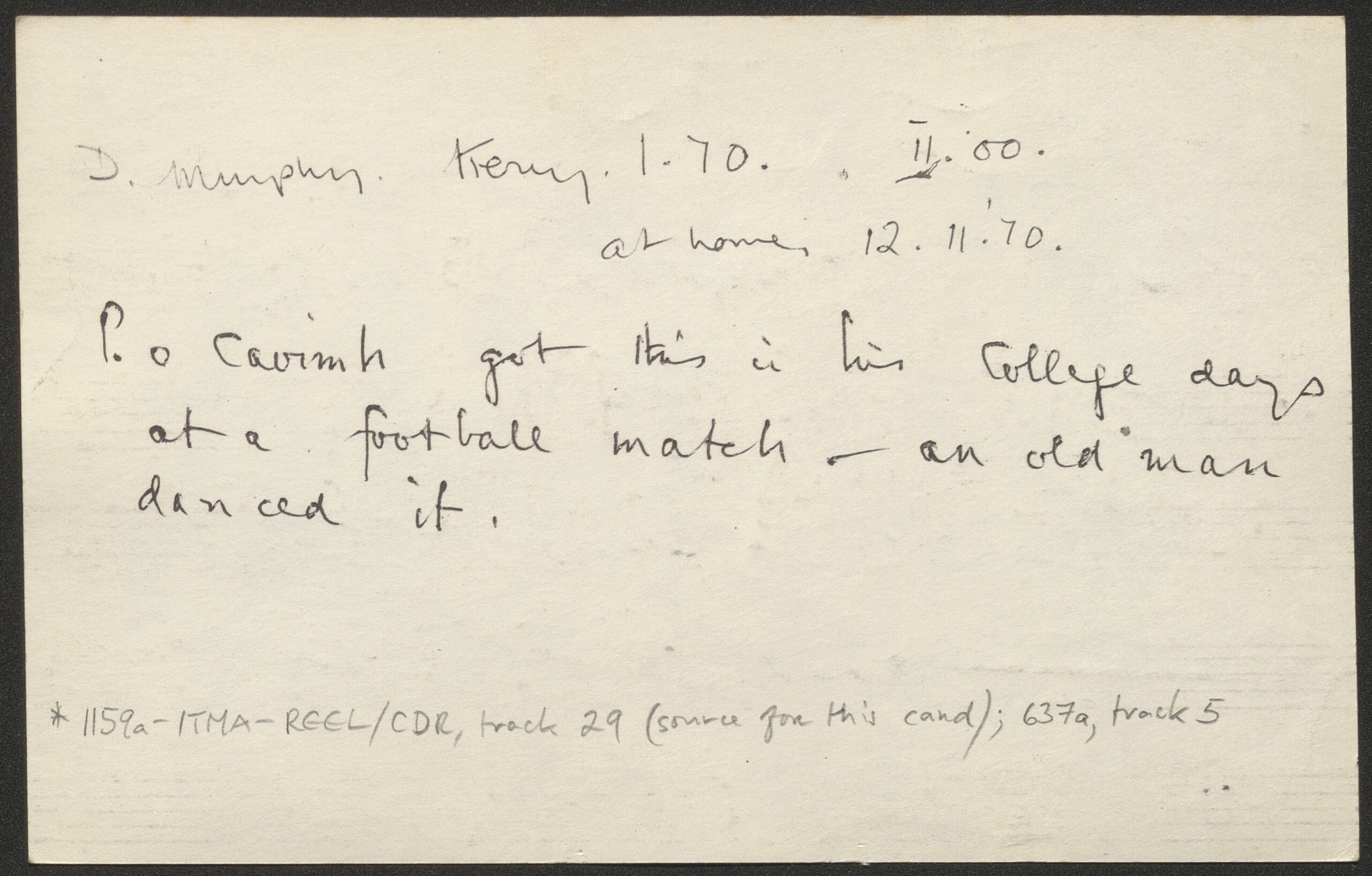
The Frisco, hornpipe / Denis Murphy, fiddle ; transcribed by Anton Zille. (Breandán Breathnach Collection. Reel-to-Reel 69, November 1970 )
The Hornpipe is the last figure of the Polka Set with relatively simple steps that used to serve an additional social function. As part of the dance partners were switched and small talk ensued which, according to the older generation of the Sliabh Luachra musicians and dancers, gave room for flirting and arranging dates for the younger crowd. If the habit was widespread enough, it would make the last figure of the set a much more popular part of the dance than it is today! In any case, since at least the 1980s, when the set-dancing revival was in full swing, the dancers would largely associate the Hornpipe with resting and winding down after the vigorous Slide figure.
The music chosen for the Hornpipe by the local musicians did not always match the stereotypical hornpipe form. Broadly speaking, these tunes could be divided into two groups: “classic” hornpipes with twisting melodies embellished by triple runs and other tunes with more or less dotted rhythms that nowadays would perhaps be classified as barndances, flings, single reels, slow reels etc.
An example of the latter type is the untitled tune played by Murphy for Breathnach first in 1967 (CICD 6180.11) and then in 1970 (CICD 6180). The tune, which Murphy classified as a hornpipe, is often called The gypsy princess. It was published without a title in Ceol Rince na hÉireann 5 while a different version of it appeared as Dolly Varden in Sliabh Luachra on Parade (1987), where Terry “Cuz” Teahan is cited as the source (for an unrelated tune called Dolly Varden by Murphy, see Miscellaneous).
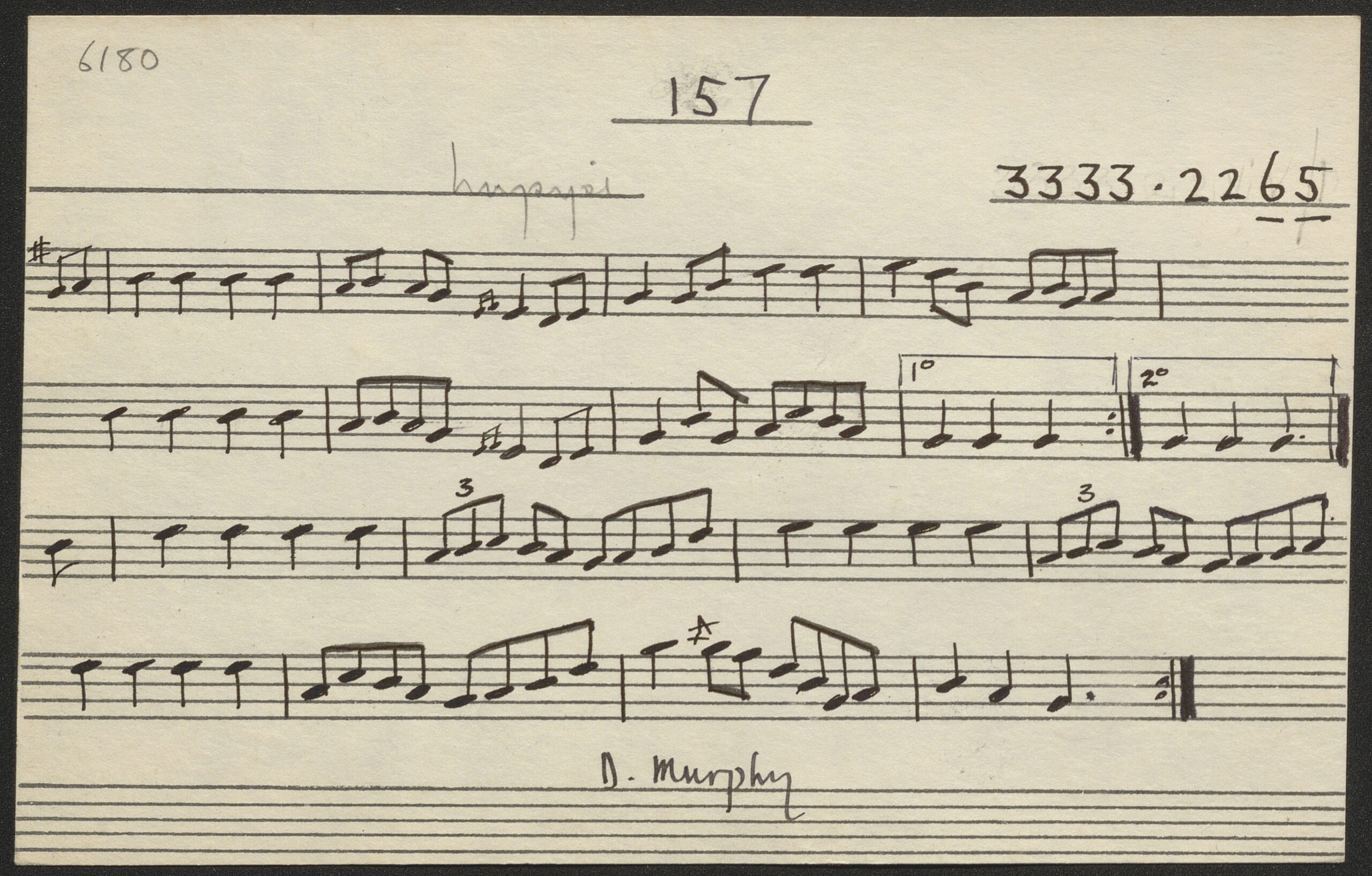
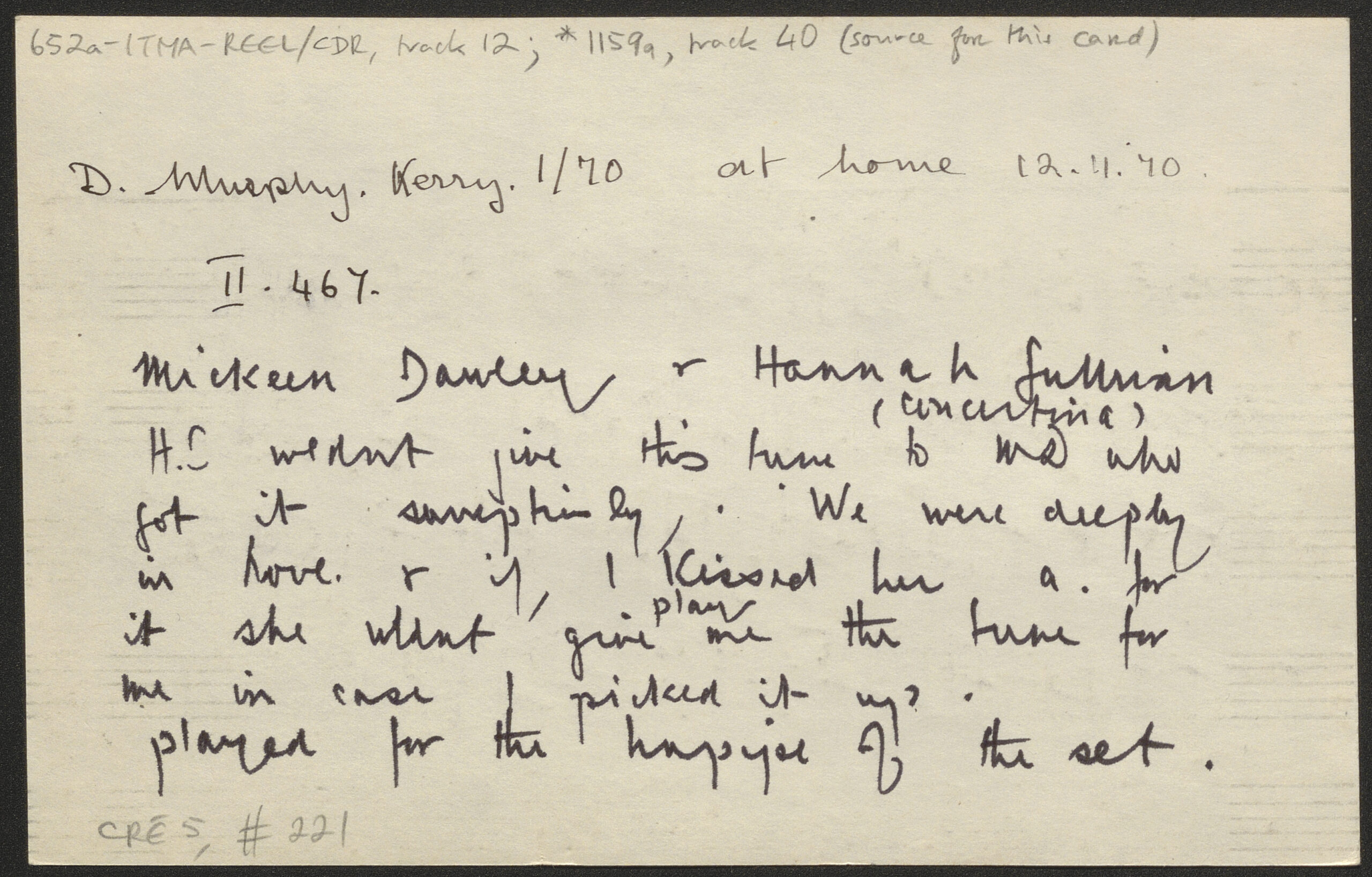
Breathnach’s notes from 1970 reveal that Denis Murphy associated this tune with the local concertina player Hannah Sullivan. Written on the flip side of CICD 6180 is a curious story of a musician being extremely possessive of their tune. Hannah Sullivan “wouldn’t give this tune” to another local musician Mickeen Dawley, presumably not playing it in his presence as Dawley had to resort to “surreptitious” means to learn it. The story is further embellished by a statement that Sullivan wouldn’t even give this tune to someone she was in a romantic relationship with (who could then play it for Dawley?) Notably, the note adds that the tune was “played for the hornpipe of the set”.
Not all of the hornpipes collected by Breathnach from Murphy were played at the dances: an interesting note to Johnny Cope on CICD 6019.11 dated 1970 says that while one could dance a hornpipe to this tune, Murphy never heard “anything had been danced to it”. Johnny Cope is originally a Scottish tune and song but it is not clear which of its many versions served as the source for O’Keeffe’s unique six-part setting. This setting was further passed on by Denis Murphy, Julia Clifford and Séamus Ennis before being famously recorded by the band Planxty in 1974. A 1949 recording of O’Keeffe playing this tune was published on The Sliabh Luachra Fiddle Master (RTÉ CD 174); a detailed essay on various versions of Johnny Cope by Nicolas Brown can be found on The Rushy Mountain.
Pádraig O’Keeffe had been known to prefer slower tempos and more intricate settings of tunes than faster and simpler music with emphasised beat usually required for the dancing. Recordings of Denis Murphy playing for the dancers and his long-time musical partnership with Johnny O’Leary, which often saw the two playing for the set, suggest that Murphy enjoyed playing tunes in various settings and contexts – but he still chose to not use O’Keeffe’s “not-for-dancing” tune as dance music.
Another hornpipe with a story attached to its name that Denis Murphy would frequently tell is now commonly called The bank of turf. However, Murphy gave a slightly different name to Breathnach in November 1970. There is a note summarising the story about that title on CICD 6047: “P. Ó C [Pádraig O’Keeffe] wrote it above in the bog. Will call it The Stook of Turf”.
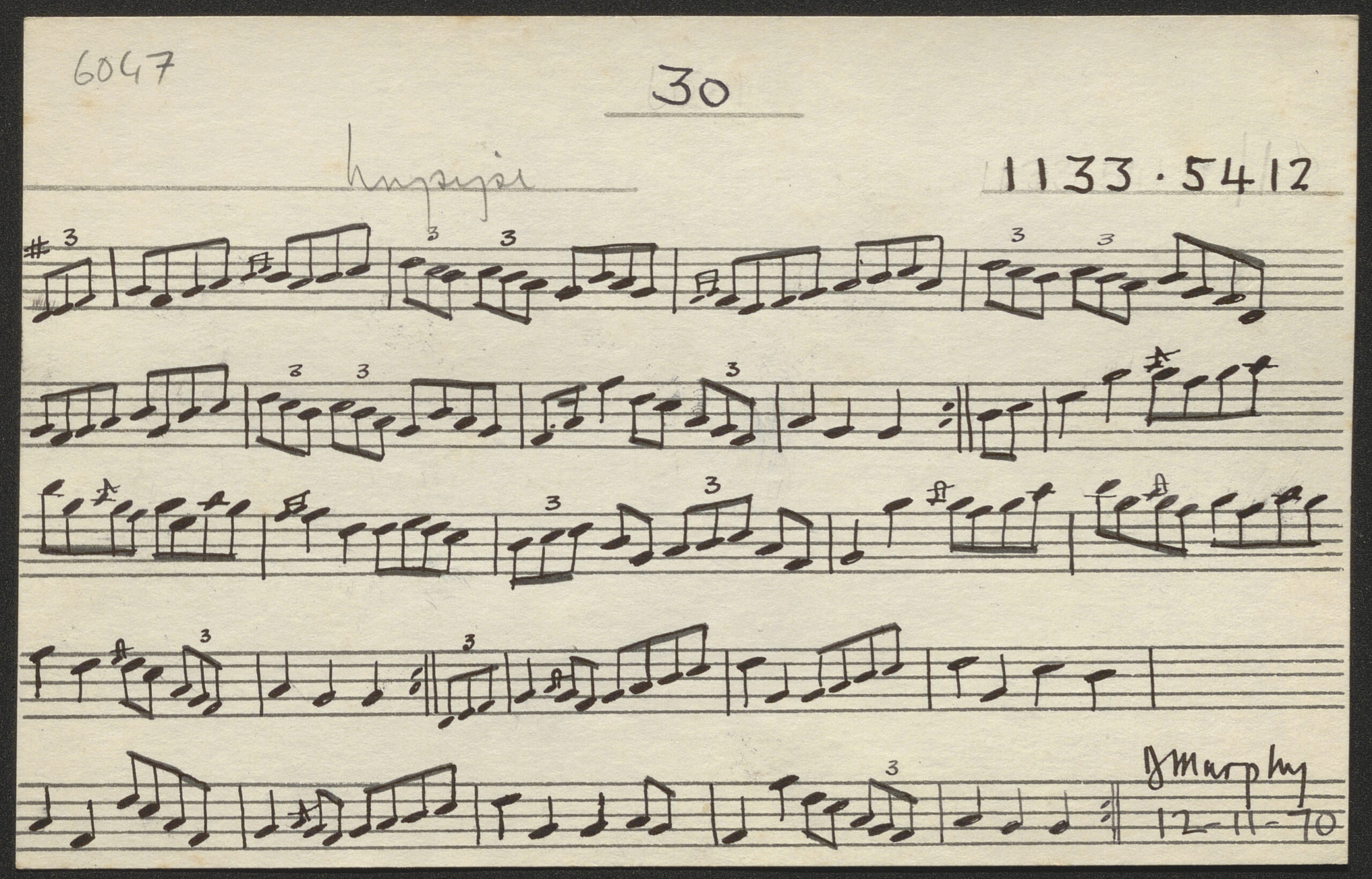
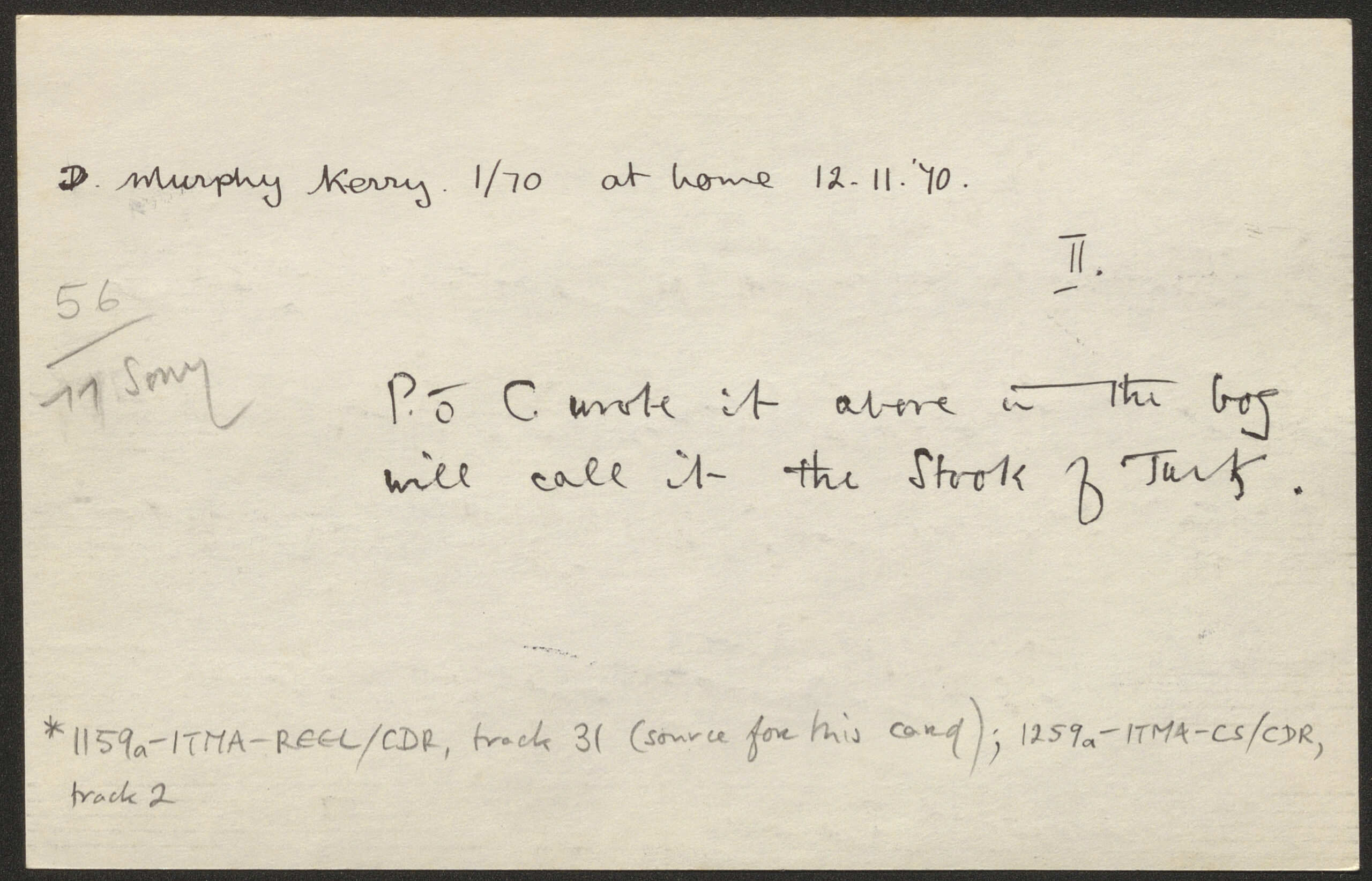
Denis Murphy can be heard telling the entire story of how O’Keeffe wrote him this hornpipe on a piece of turf using own tablature notation on an undated tape donated to the Breandán Breathnach Collection by Séamus Mac Mathúna (1259-ITMA-CS, track 2).
Curiously, Murphy had yet another name for this hornpipe – O’Callaghan’s low – which he used to differentiate between several tunes that came from Pádraig O’Keeffe’s maternal uncle Cal O’Callaghan. O’Callaghan’s name and his home townland of Doon (Doonasleen, Kiskeam, Co. Cork), where O’Keeffe spent a few years of his childhood and learned to play the fiddle, are featured in tune names all throughout Denis Murphy’s repertoire.
Sometimes a title of a Denis Murphy tune implies a story but it is not to be found anywhere. This is the case for The tiger hornpipe recorded by Breathnach in November 1970 and published in Ceol Rince na hÉireann 5, no. 211. The tune was originally published in Scottish music collections as a strathspey (titled Lady Ann Hope) then classified by Francis Roche as a fling (John Roche’s favourite) and by James Goodman as a hornpipe (Signora Ferze’s). Denis Murphy’s source for the tune had remained as much of a mystery as its exotic title used in CRÉ.
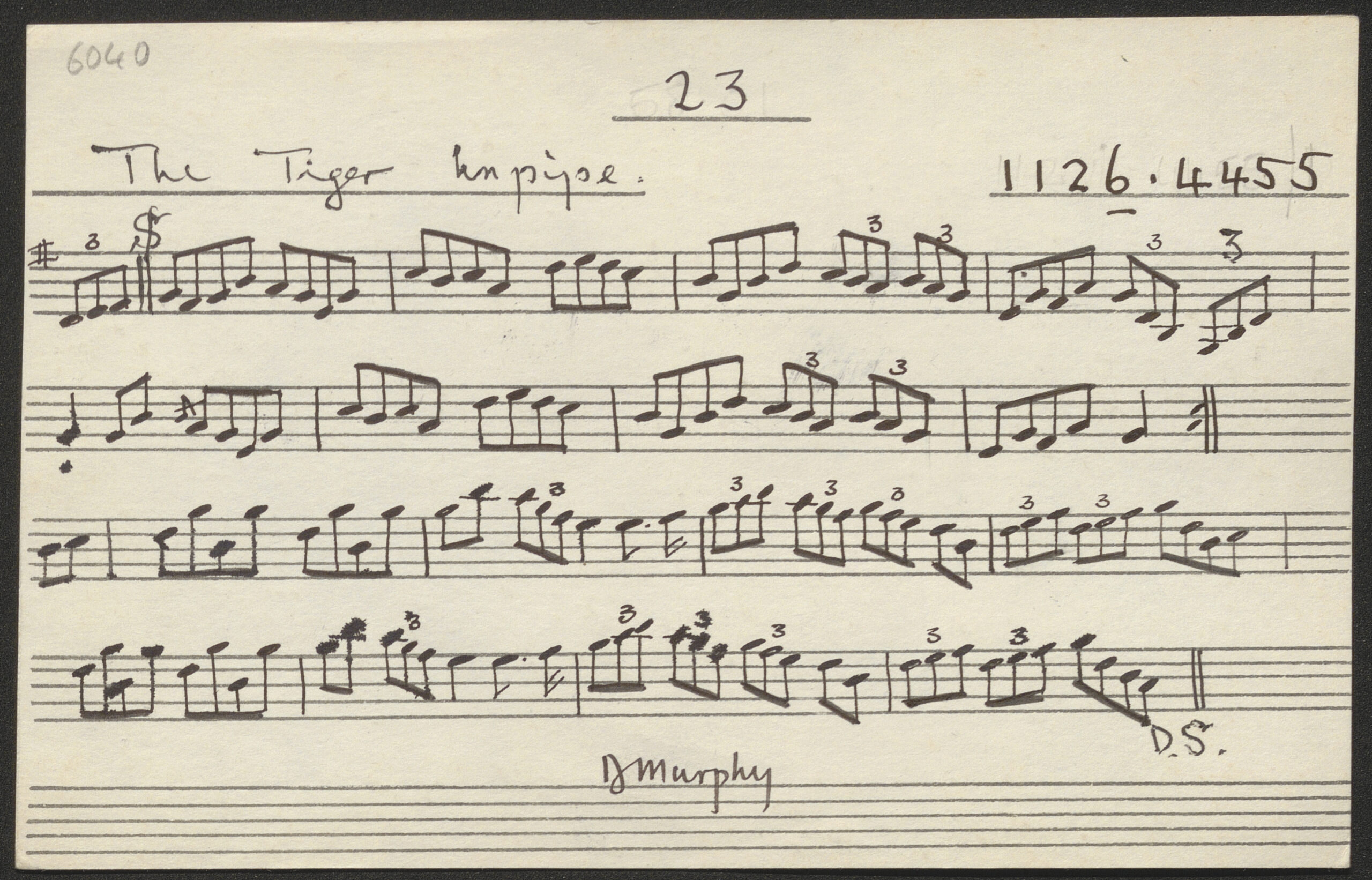
Breathnach transcribed Denis Murphy’s setting, marked as a hornpipe, on CICD 6040 and CICD 6040.11 and the latter notes that “Willie Sullivan used [to] play it”. This is most likely the same Bill Sullivan after whom Pádraig O’Keeffe had named a popular polka written by Terry Teahan (Terry himself had a colourful name for that polka: Mickey chewing bubblegum).
Sadly, the Breathnach materials do not contain any clues as to the origin of the name. However, The tiger title most definitely came from Denis – this is the conclusion one would arrive at after comparing all other CICD tune titles to Murphy’s comments caught on tape and analysing Breathnach’s method of naming tunes. Breathnach encouraged performers to come up with a title on the spot if the tune had none; on rare occasions he would propose his own if the untitled tune was known to him thanks to published sources. There are also duplicate transcriptions made from different recording sessions which remained untitled unless the performer came up with a title at a later date. All in all, CICD cards and their sources suggest that it was not common practice for Breathnach to make up tune titles.
One could speculate that Denis Murphy was intimately familiar with tigers thanks to his work at the Bronx Zoo where he thatched roofs of animal houses. Murphy’s time at the zoo, which was some time between 1950s and early 1960s, has even been immortalised in the local folklore. A certain incident involving Murphy and another big cat – a lion with whom he ended up napping in one cage – is described in a poem by New York-born musician and music collector Bill Black. It is a humanising thought that Irish music greats of the yesteryear risked falling victim to a prank!